China has become a major player in the carbon bike frame market, with many reputable brands producing high-quality and affordable frames. In this article, we will introduce you to the top 5 famous carbon bike frame brands from China. Among these brands is Trifox Bike, which stands out for its exceptional quality and affordability.
Trifox Bike MFM200 mountain bike frame for sale:
The Trifox Bike Carbon MTB Frame MFM200 is a high-performance frame designed for mountain biking enthusiasts. It's made of T800 full carbon fiber, which provides excellent strength and stiffness while remaining lightweight.
The frame features internal cable routing, tapered head tube, and BB68 - BSA bottom bracket compatible, providing a clean and sleek look. The geometry is optimized for trail riding, with a slack head angle and long top tube for stability and control.
Trifox Bike is committed to providing high-quality and affordable carbon frames for mountain bikes, and the MFM200 is no exception. It's an excellent choice for anyone looking for a reliable and durable frame for their mountain bike.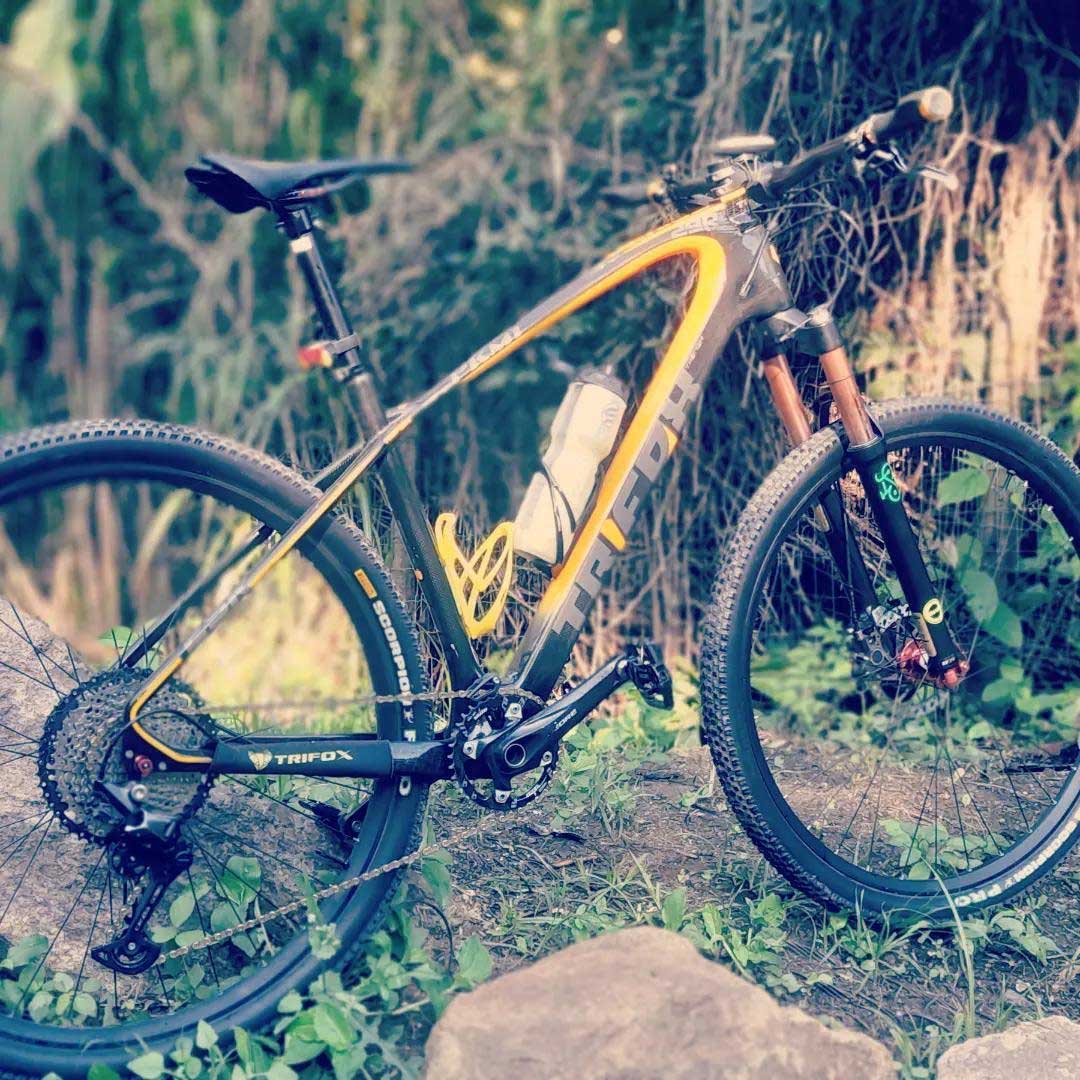
Top 5 Famous Carbon Bike Frame Brands from China:
Trifox Bike:
Trifox Bike is a well-known brand in the carbon bike frame market, offering high-quality and affordable frames for mountain bikes and road bikes. Their frames are made of T800 carbon fiber, providing excellent strength and stiffness while remaining lightweight. Trifox Bike is committed to providing exceptional quality and affordability to mountain biking enthusiasts.
Hongfu Bikes:
Hongfu Bikes is a popular brand that offers a wide range of carbon bike frames for road and mountain bikes.
ICAN Cycling:
ICAN Cycling is a well-established brand in the carbon bike frame market, offering high-quality frames for road and mountain bikes.
Yoeleo:
Yoeleo is a reputable brand that offers a range of carbon bike frames for road and mountain bikes.
Dengfu Sports Equipment:
Dengfu Sports Equipment is a leading brand in the carbon bike frame market, offering a wide range of frames for road and mountain bikes.
Conclusion:
In conclusion, China has become a major player in the carbon bike frame market, with many reputable brands producing high-quality and affordable frames. Among these brands is Trifox Bike, which stands out for its exceptional quality and affordability. We highly recommend the Trifox Bike Carbon MTB Frame MFM200 for anyone looking for a reliable and durable frame for their mountain bike.

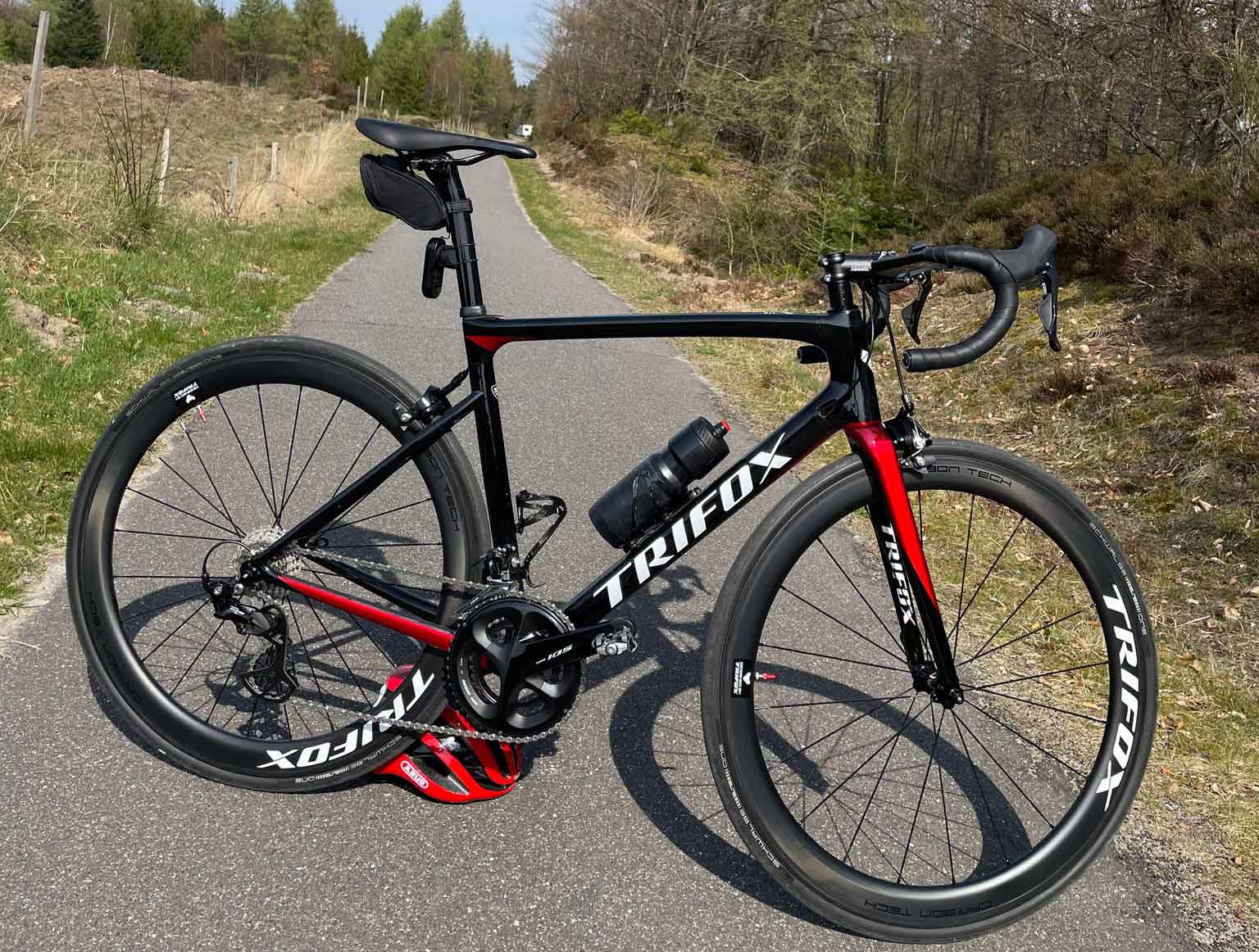
Finding the perfect road bike can be a daunting task and choosing the right frame size is crucial for a comfortable and efficient ride. One of the most important factors in selecting the right frame size is your height. With the right frame size, you can avoid injury, reduce fatigue, and improve your performance on the road.
1. Measure Your Height: To determine the right road bike frame size by height for you, the first thing is to measure your height accurately. Stand against a wall without shoes, and place a measuring tape on the top of your head. Measure down to the floor. This measurement will give you an idea of the appropriate frame size that will suit your height.
2. Use a Frame Size Chart: Frame size charts are readily available on most bike manufacturers' websites, and they offer an easy way to find the appropriate frame size for your height. The charts usually take into consideration various factors like your inseam, arm length, and torso length. Simply match your height measurement with the corresponding frame size on the chart to choose the right road bike frame size.
3. Consider Your Riding Style: Another important factor to consider when choosing the right road bike frame size is your riding style. If you're a casual rider who enjoys leisurely rides around the park, a bike with a smaller frame size may work for you. However, if you're a serious cyclist who participates in races or long-distance rides, you may want to consider a larger frame size that provides a more aerodynamic position and greater power transfer.
4. Test Ride Different Sizes: While frame size charts and measurements can give you an idea of the right road bike frame size, the best way to ensure a perfect fit is by testing the bike itself. Schedule a test ride with a knowledgeable bike shop or manufacturer to try out different sizes and styles of road bikes. This will help you to determine the best-fitting road bike for your height and riding style.
5. Seek Professional Advice: If you're still unsure about the right road bike frame size for your height after using size charts or test riding bikes, consider seeking professional advice. A professional bike fit specialist will help you determine the perfect fit by considering different factors like your body type, flexibility, riding goals, and cycling experience. They can also make specific adjustments to your bike frame to ensure a perfect fit.
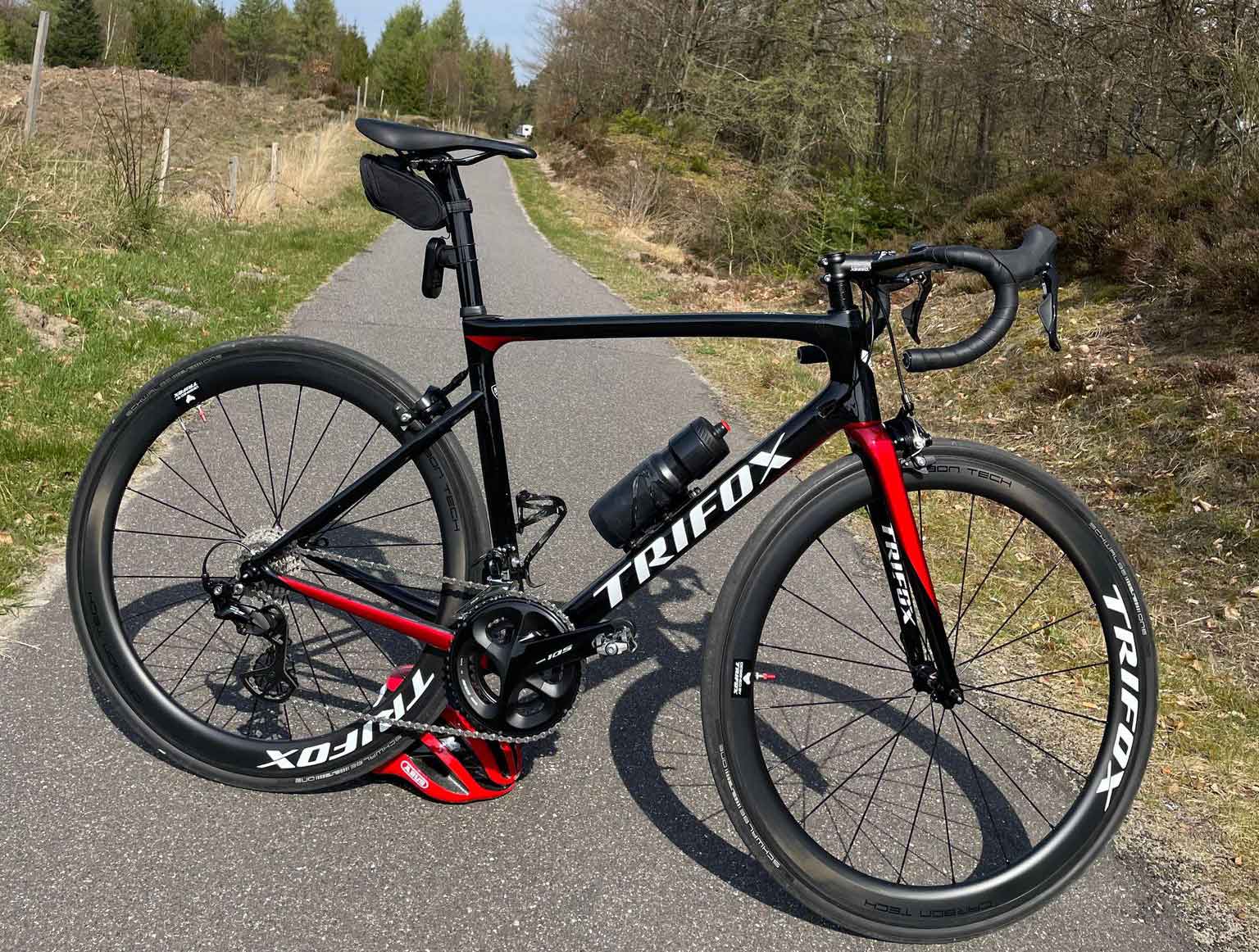
Conclusion:
Choosing the right road bike frame size for your height is essential to ensure maximum comfort, efficiency, and performance on the road. Follow the steps above to measure your height, use frame size charts, consider your riding style, test ride different sizes, and seek professional advice if necessary.
With these steps, you can rest assured that you will find the perfect road bike frame size that fits your height and needs. Happy cycling!

Riding a road bike is an exhilarating experience that every bike enthusiast should try. With its sleek frame, drop handlebars, and lightweight build, it's perfect for cycling enthusiasts who love to challenge themselves and go on long rides. However, before you start building your dream bike, it's essential to understand road bike frameset clearance.
Frameset clearance is the gap between the frame of the bike and the wheels. It’s a crucial factor that affects your ride because it determines the size of the wheels you can use, the clearance of the frame with your body, and the comfort level you experience while cycling.
In this blog post, we’ll explore the different types of road bike frameset clearances, how to measure them and determine the right clearance size for your body, and what you should know to have a more comfortable ride.
1. Types of Road Bike Frameset Clearances
There are three main types of road bike frameset clearances: clearance for caliper brakes, clearance for disc brakes, and clearance for cantilever brakes.
Caliper brakes are the most common and work by pressing against the rim of the wheel. Frames with caliper brake clearance usually have less space between the wheel and the frame, making them ideal for racers who want a more aerodynamic bike.
Disc brake frames have more clearance than their caliper brake counterparts because the brake mechanism sits near the hub of the wheel. They provide more stopping power, which is why their clearance is more significant.
Cantilever brake clearance is less common than the other two types. However, it is still available on some older models. This clearance is unique because it provides more clearance to make room for the brake mechanism's position.
2. How to Measure Your Frameset Clearance
The first step in measuring your frameset clearance is to determine the tire size you want to use. After that, you will need to measure the height of your wheel and subtract that from the height of your frame. The resulting number is your frameset clearance.
It’s essential to measure the clearance on both sides of your wheels since they might not have the same level of clearance. In addition, make sure to measure in millimeters to get an accurate reading.
3. How to Determine the Right Frameset Clearance
Determining the right frameset clearance for your body depends on your riding style and height. For road bikes, the clearance should be around 4 to 6 millimeters. If you are using wider tires, it’s essential to have more clearance, at least 1 to 2 millimeters more per side.
Furthermore, if you are tall and want a more upright position while riding, you might need more clearance to avoid hitting your feet on the front wheel while cycling.
4. Other Factors that Affect Frameset Clearance
The type of riding you prefer also affects your frameset clearance. If you’re using your bike for commuting or touring, you’ll want more clearance because wider tires are more comfortable and provide better traction on different surfaces.
Finally, your riding style also plays a role. If you’re an aggressive rider who likes to take tight corners at high speeds, you might need a bike with less clearance and smaller tires to ensure a better grip on the road.

Conclusion:
Frameset clearance plays a vital role in the quality of your ride. Understanding the different types of clearances and how to measure them is the first step in finding the perfect bike for your body. Consider your height, riding style, and the type of riding you prefer to determine the clearance size that’s right for you. This way, you can experience a comfortable, fast, and safe ride on your road bike.
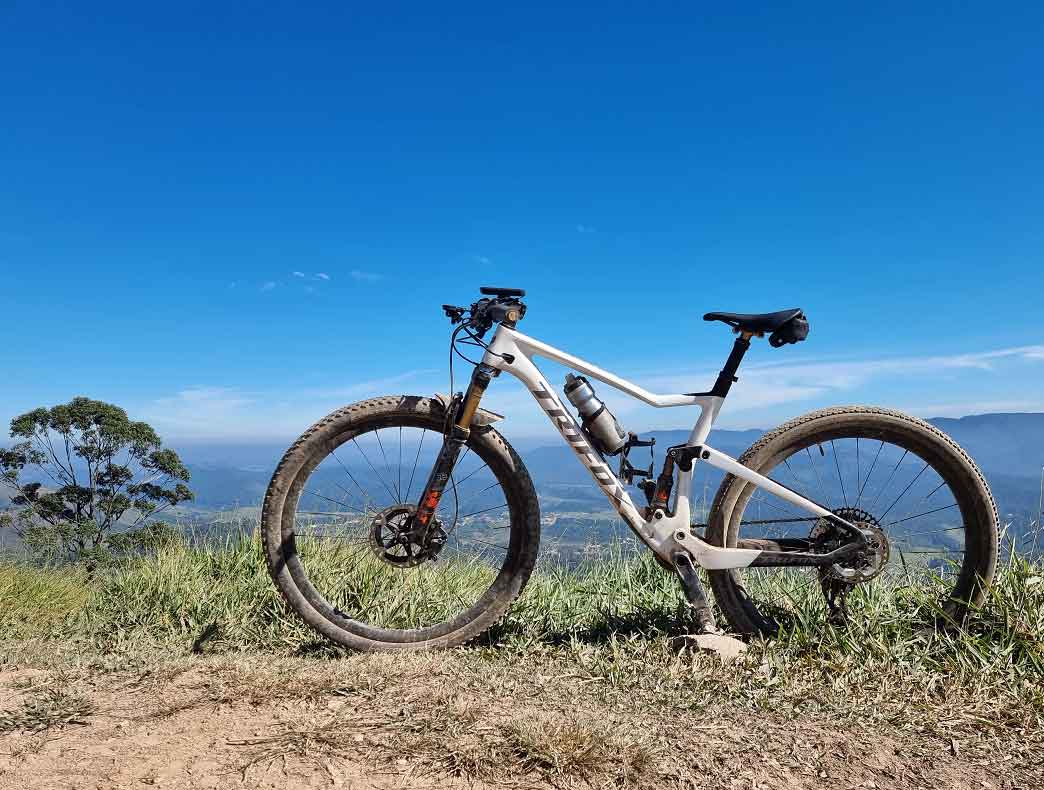
One of the essential components of any bike is its frame, as it determines the bike's stability, comfort, and performance. Bike frames come in all shapes, sizes, and materials, with each having a specific purpose and design. One of the common sizes of bike frames is 21 inches, which is ideal for taller riders.
Now, we will discuss the various inch bike frames available and understand what size frame will suit your body type.
1. 21 inch bike frames
A 21 inch bike frame is suitable for riders who are 6'4" to 6'7". It allows ample leg extension and comfort, preventing the rider from feeling cramped while pedaling. However, it's essential to select the right type of 21 inch bike frame, as various designs and materials have different characteristics. For instance, if you're using the bike for off-road or mountain biking, a full-suspension 21-inch frame may provide a smoother ride.

2. 19-inch bike frames
A 19-inch bike frame is suitable for riders who have a height range between 5'10" and 6'2". It's a versatile frame size, suitable for both road and mountain biking. It's essential to select a 19-inch frame that suits your riding style, as a mountain bike frame design will differ from a road bike frame. A mountain bike frame may be more durable, whereas a road bike frame may prioritize speed and efficiency.
3. 17-inch bike frames
A 17-inch bike frame is ideal for riders who have a height range between 5'4" and 5'8". It's a smaller frame size, primarily designed for road biking. A small frame size allows the rider to maintain a more aerodynamic posture and gain speed more easily. However, it's vital to test a 17-inch frame before purchasing, as it may feel cramped and uncomfortable for extended periods.
4. Other bike frame sizes
Apart from the above-mentioned standard bike frames, there are several other sizes available, such as 15-inch, 13-inch, and 11-inch frames. These sizes are designed for children and people with shorter heights. It's essential to select the right size frame for children, as a bike that's too big or small may cause discomfort and instability.
Conclusion:
In conclusion, selecting the right size bike frame is essential to ensure a safe and comfortable ride. One of the common sizes for taller riders is 21-inch frames, whereas smaller frames such as 17-inch are designed for road biking and gaining speed. It's essential to select the right design and material for your frame, based on your riding style.
A mountain bike frame will be different from a road bike frame in terms of durability, suspension, and stiffness. Before purchasing, it's vital to test the bike and frame to ensure it suits your height and riding style.

Carbon mountain bike frame are popular among riders who are looking for a bike that is lightweight, strong, and durable. Carbon fiber is a popular material for mountain bike frames because it is lightweight, stiff, and absorbs shock, which makes it ideal for off-road riding.
Carbon fiber mountain bike frames come in different types, and in this blog post, we will discuss the different types of carbon fiber mountain bike frames that are available in the market.
1. Monocoque Frames
The monocoque frame is a popular type of carbon fiber mountain bike frame that is commonly used in high-end bikes. It is made by molding carbon fiber into a one-piece structure that is strong and stiff. Monocoque frames are popular because they are lightweight and provide excellent shock absorption. The downside of this type of frame is that it is expensive to produce.
2. Hybrid Frame
As the name suggests, a hybrid frame is a combination of two materials, carbon fiber, and aluminum. The aluminum is used for the rear end of the bike, while the carbon fiber is used for the front end. This combination provides a bike that is both strong and lightweight. The hybrid frame is ideal for riders who want the best of both worlds.
3. Laminated Frame
The laminated frame is a type of carbon fiber mountain bike frame that is made by layering sheets of carbon fiber on top of each other and bonding them together with epoxy resin. This technique is cheaper than the monocoque technique, but it still provides a strong and stiff frame. The downside of this type of frame is that it is heavier than the monocoque frame.
4. Tube-to-Tube Frame
The tube-to-tube frame is a type of carbon fiber mountain bike frame that is made by bonding individual tubes together to create the frame. This technique is cheaper than the monocoque technique, and it provides a bike that is strong and lightweight. The downside of this type of frame is that it is not as stiff as the monocoque or laminated frames.
5. Truss Frame
The truss frame is a unique type of carbon fiber mountain bike frame that looks like a bridge. The triangular design provides a strong and rigid frame that is ideal for off-road riding. The truss frame is relatively expensive to produce, which makes it a rare type of frame.

Conclusion:
In conclusion, carbon fiber mountain bike frames come in different types, and riders should choose the one that best suits their riding needs and budget. Monocoque frames are ideal for riders who want the lightest and stiffest frame, while laminated and tube-to-tube frames are cheaper alternatives that still provide a strong and stiff frame. Hybrid frames are ideal for riders who want the best of both worlds, and the truss frame is a rare type of frame that provides a unique design that is strong and rigid.
Whatever type of carbon mountain bike frame you choose, you are guaranteed a bike that is lightweight, strong, and durable, perfect for off-road adventures.
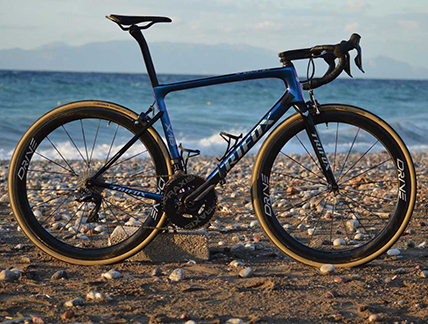
When it comes to choosing the right road bike frameset, there are two popular options to consider: steel and carbon fiber. Both materials have their unique strengths and weaknesses, and each one is suited for different types of riders and riding styles.
In this article, we will discuss the differences between steel and carbon fiber road bike framesets, their pros and cons, and which one is best suited for you.
Steel Road Bike Frameset:
Steel has been the preferred material for road bike frames for decades due to its strength, durability, and ride quality. Steel frames are known for their comfortable and smooth ride thanks to their natural vibration damping properties. They are also ideal for touring and long-distance rides due to their ability to carry heavy loads.
Pros:Comfortable and smooth ride
Durable and long-lasting
Ideal for touring and long-distance rides
Affordable
Cons:Heavy compared to carbon fiber
Not as stiff, making them less responsive
Prone to rust and corrosion if not maintained properly
Carbon Fiber Road Bike Frameset:
Carbon fiber is a relatively new material used in road bike frames, but it has quickly gained popularity due to its light weight, stiffness, and aerodynamic properties. Carbon frames are designed to provide maximum power transfer and responsiveness, making them ideal for racing and high-performance rides.
Pros:
Lightweight and stiff, providing maximum power transfer
Aerodynamic properties reduce wind resistance, increasing speed
Customizable layup for different ride characteristics
Can be molded into complex shapes for improved aesthetics
Cons:
Expensive compared to steel
Not as durable as steel and more prone to damage from impacts
Harsh ride quality due to lack of vibration damping properties
Requires special care and maintenance to avoid damage from UV exposure and stress
Which One to Choose?
Choosing between steel and carbon fiber road bike frameset comes down to your riding style, preferences, and budget. If you prioritize comfort, durability, and affordability, steel is the way to go. It's ideal for touring, long-distance rides, and everyday use.
On the other hand, if you prioritize speed, performance, and aesthetics, carbon fiber is the better choice. It's ideal for racing, high-performance rides, and those who want the lightest and most responsive bike possible. You can find a carbon road bike frameset for you on the Trifox website.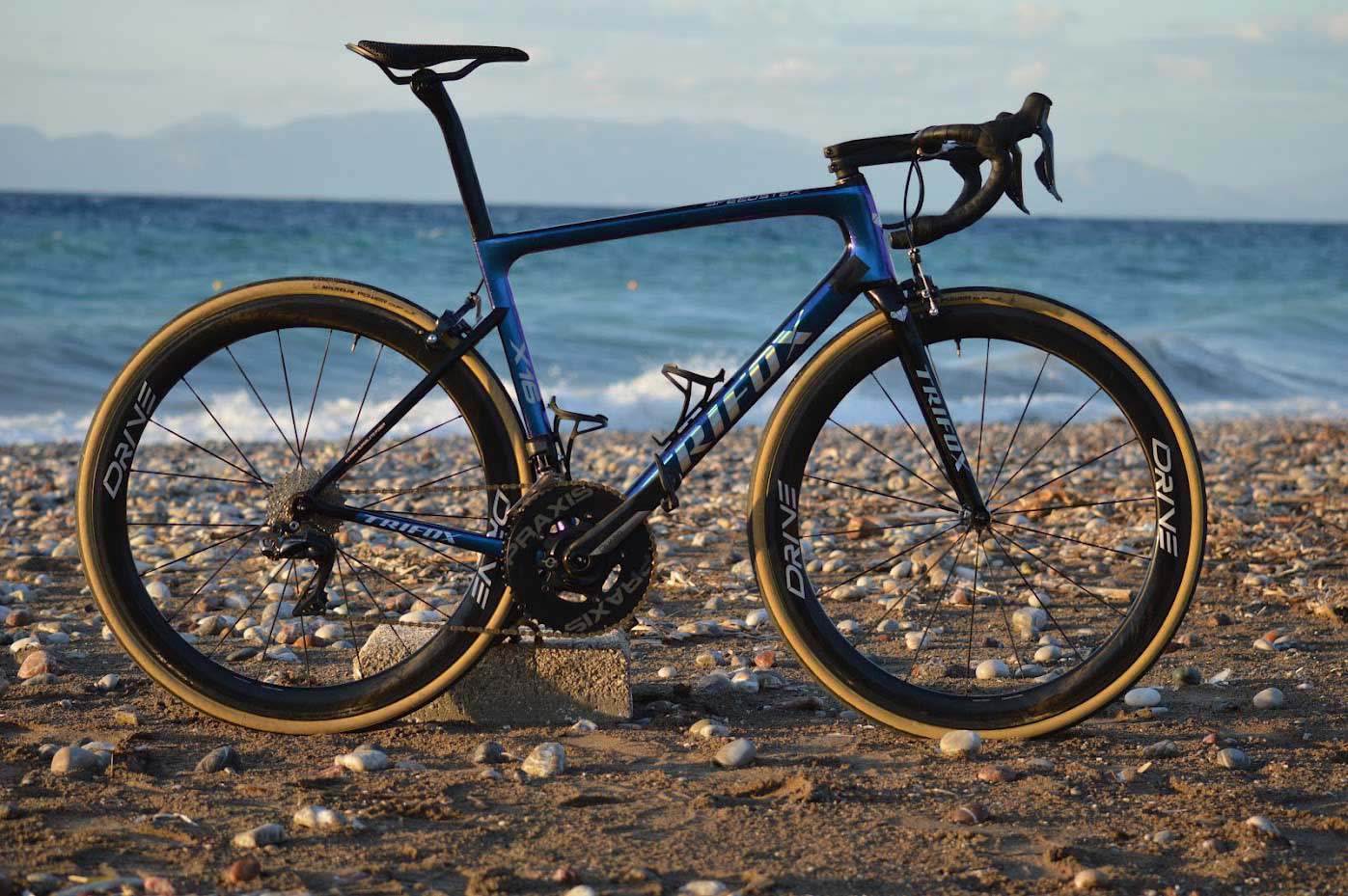
Conclusion:
In conclusion, choosing between road bike steel frameset and carbon road bike frameset comes down to your personal preferences, riding style, and budget. Both materials have their unique strengths and weaknesses, and each one is suited for different types of riders and riding styles.
If you're still unsure which one to choose, we recommend trying out both materials to see which one feels the most comfortable and suitable for you. Remember, the right frameset can make all the difference in your cycling experience, so choose wisely.

Road biking is a fun and exhilarating way to explore the great outdoors while getting a good workout. But if you're new to the sport, one of the most intimidating aspects can be figuring out what size road bike frame you need. Getting the right fit is crucial for comfort, efficiency, and preventing injury.
The first step in finding the right road bike frame size is to measure yourself. Most bike manufacturers use the measurement of the length of the seat tube to determine frame size, usually measured in centimeters. To measure yourself, stand barefoot with your back against a wall, and measure the distance from the floor to your crotch. This measurement is known as inseam length and is a good starting point for choosing the right frame size.
Once you know your inseam length, you can consult a road bike frame size chart. These charts typically list rider height and inseam length to recommend a frame size. It's important to remember that these charts are just a starting point, and riders may fall in between sizes or have different proportions that affect fit. It's always best to test-ride a bike before purchasing it to ensure a comfortable fit.
In addition to frame size, it’s important to consider other factors that affect fit, such as saddle height and handlebar reach. Saddle height is the distance between the top of the saddle and the center of the bottom bracket, and can be adjusted by raising or lowering the saddle. Handlebar reach is the distance between the saddle and the handlebars and can be adjusted by changing the stem or handlebars themselves.
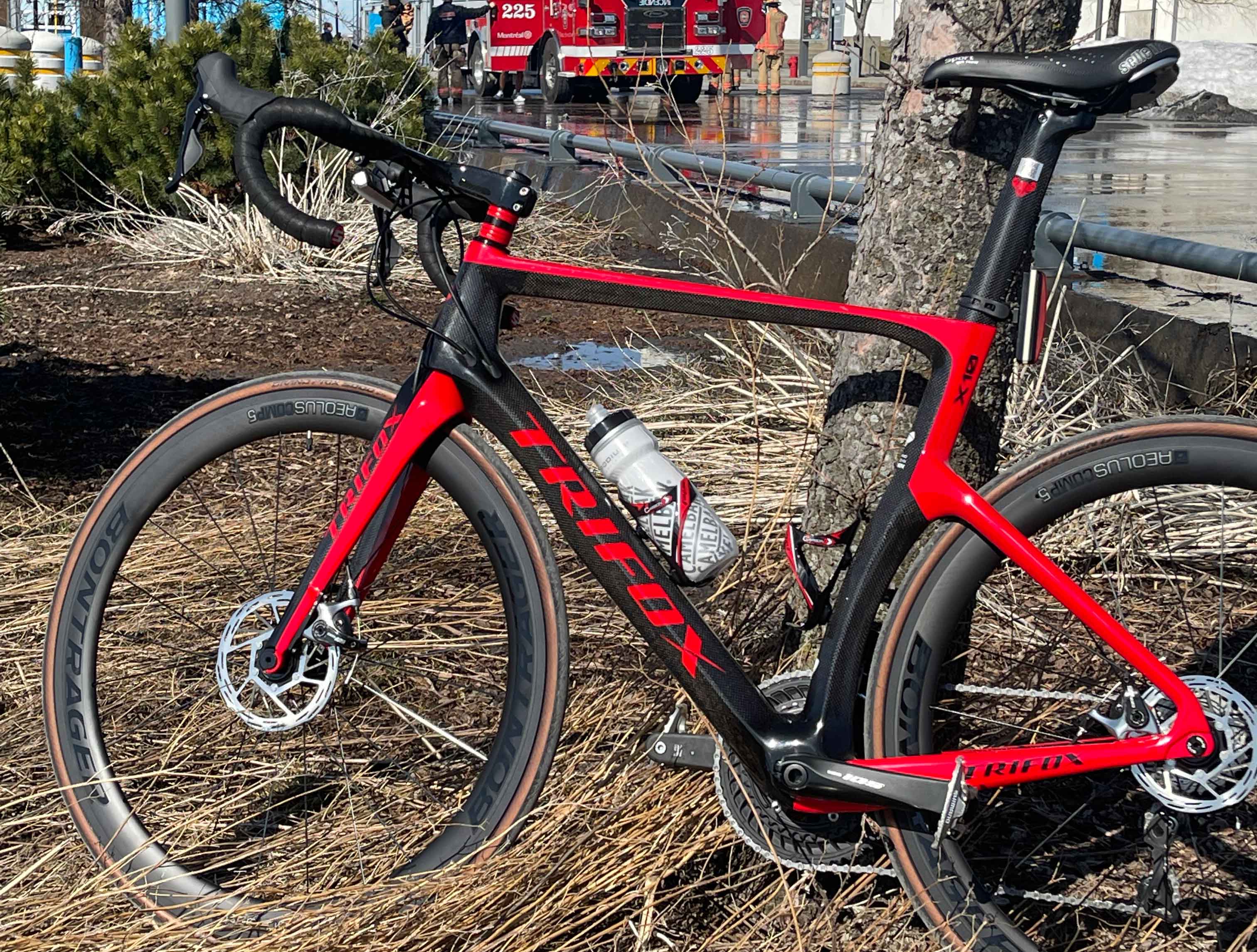
One thing to keep in mind when it comes to frame size is that smaller frames tend to be more maneuverable and easier to handle, but they may not be as comfortable for long rides or for taller riders. Larger frames offer a more upright riding position and are better for taller riders, but can be less maneuverable. It’s all about finding the right balance of comfort and performance for your individual needs.
If you're in the market for a new road bike frame, consider the Trifox 700C Carbon Road Bike Frameset X10. This frame is made from a high-rigid, lightweight carbon fiber combination that provides excellent performance and efficiency. It’s also fully customizable with adjustable seat and chainstay lengths to fit a wide range of rider sizes and preferences.
Conclusion:
Finding the right road bike frame size is essential for getting the most out of your cycling experience. By measuring yourself and consulting a size chart, you can find a starting point for choosing the right size frame.
However, it's important to remember that fitting is an individual process, and other factors like saddle height and handlebar reach can also affect comfort and performance. By taking the time to make adjustments and test-ride different options, you can find the perfect fit for your needs.

Some tips for adjusting road brakes are not aligned? Many road cyclists are used to it. But this habit is very bad! It could be aligned in the center, but do you want it to be crooked?
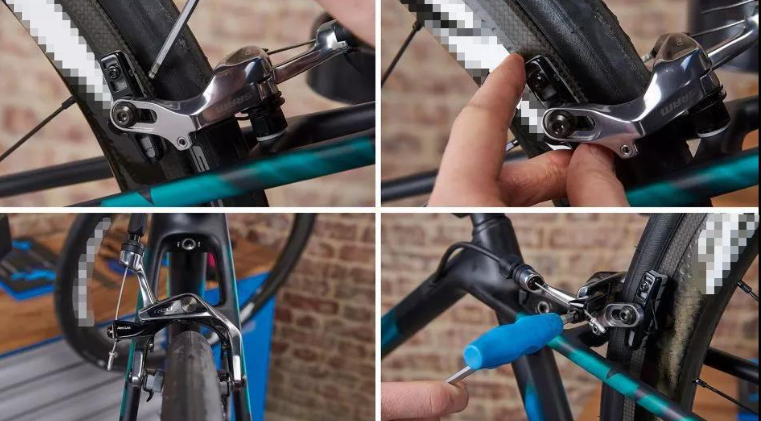
1. Check
The brake pads (or brake shoes) may not be aligned, please check if they are aligned with the center of the brake edge.
2. Release the brake shoe
Turn the Allen key counterclockwise to loosen the brake shoe/brake pad in the caliper, adjust it up and down and level it.
3. Align
Adjust the brake shoe to align the brake pad with the brake edge, and then tighten the fixing screw. Be sure to hold the brake pads when tightening the screws, because the brake pads will move under force when tightening. If it does not meet the requirements, please do it again.
4. Centered
Stand at the rear/front of the car and look at the brake clearances around the caliper.
5. Tighten the clamp fixing screw
It's definitely not good to be invisible! Adjust the fixing screws until the rim is centered.
Many people like to loosen this fixing screw, saying that it can be automatically aligned when braking (for the safety of riders, please be sure to tighten it! Avoid the risk of loosening the fixing screw and the clip falling!)
6. Adjust the brake cable
Fix the brake cable! Adjust the brake spacing! If necessary, loosen the screws and readjust. Although there is usually an adjustment screw for the brake spacing here, I think this screw is mainly used to compensate for the wear of the brake pads and achieve a consistent brake feel.





















































